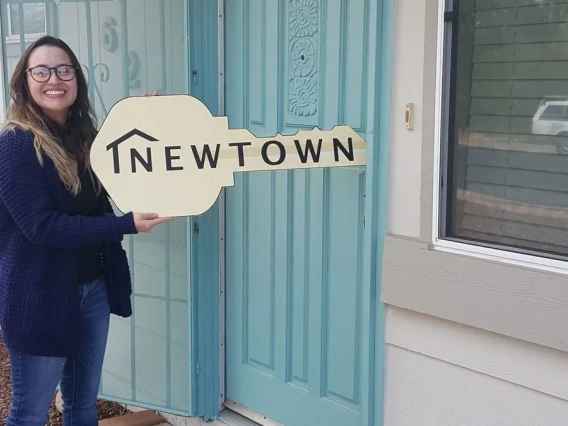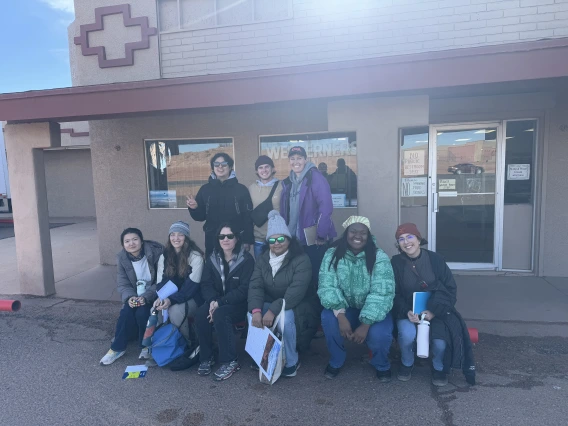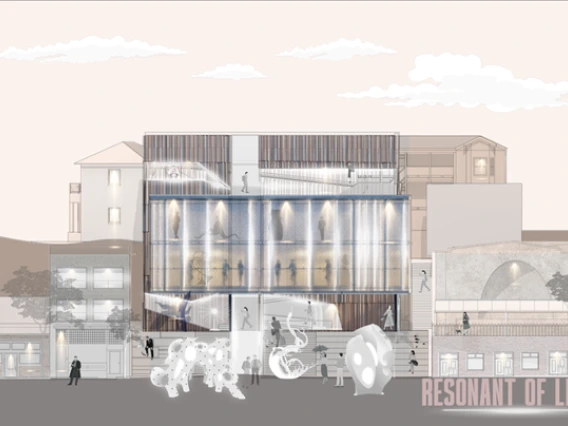Architecture students' award-winning designs will help Hopi Tribe expand solar-powered housing, education
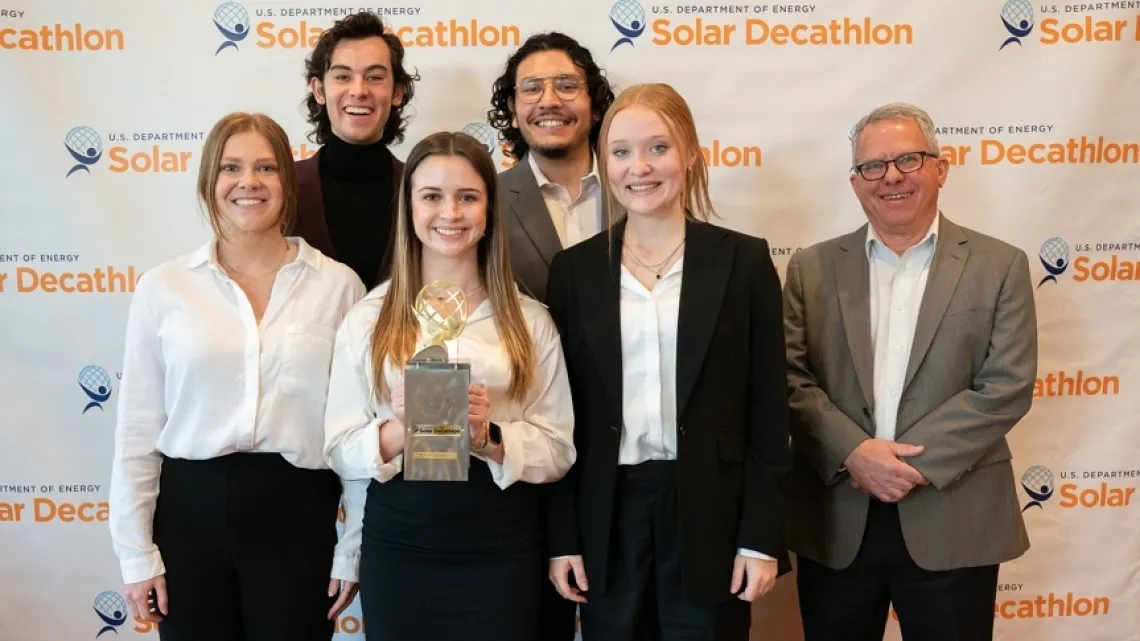
From left: Fourth-year architecture students Emme Mooday, Jedidiah Perea, Olivia Nelson, Pablo Cabanillas, Jordan West and David Brubaker, an adjunct lecturer in the School of Architecture. The team clinched first place in the attached housing division and was named the top winner in the 2024 Department of Energy Solar Decathlon Design Challenge Competition. Their designs for a condominium complex on the Hopi reservation are part of a larger student-led design plan for an educational campus the Hopi Tribe has been planning for decades.
U.S Department of Energy and Solar Decathlon Design Challenge
Jedidiah Perea, a fourth-year student in the University of Arizona College of Architecture, Planning and Landscape Architecture, had no idea what he would be designing when he began an architecture studio course in the spring.

Jedidiah Perea
But he knew what he hoped to accomplish.
"I wanted to do something that I knew would be a challenge and require a lot of knowledge that we had learned in previous classes but not necessarily employed yet," Perea said.
He got what he bargained for – and then some.
Perea and 15 classmates in a School of Architecture design studio course spent the spring semester designing housing and an educational campus for the Hopi Tribe, as part of a solar-powered village that the tribe has long sought to build on its reservation in Northern Arizona. The partnership with the university was a major step in the project, called Tawa'Ovi, which the tribe hopes will spur economic development, expand tribal services and provide more housing options for tribal members.
The students' projects earned recognition in a U.S. Department of Energy design competition in April, with Perea's team winning the top award.
For Perea and many of his classmates, it was their first time designing something with an actual client in mind, as opposed to more conceptual design assignments.
The partnership was also an example of how the university can serve tribal communities in Arizona, said Levi Esquerra, university senior vice president for Native American advancement and tribal engagement.
"One of the best ways we can learn someone else's culture is to experience it with a passion you're interested in," he said. "If we have an opportunity to share resources with tribes, we should share them."
Tawa'Ovi
The Hopi have lived in Northern Arizona for millennia. The Hopi reservation today makes up 1.5 million acres and includes 12 villages spread across three mesas. One village, Old Oraibi, is widely considered to be the longest continuously inhabited village in North America, dating back to 1100.
Development on the reservation comes with many challenges, said Andrew Gashwazra, director of the tribe's Office of Community Planning and Development. Among those challenges is a power grid with limited capacity that is difficult to reach from undeveloped areas of the reservation.
As development has waned on the reservation, many younger tribal members have left to pursue educational and career opportunities elsewhere.
Many Hopi think that the Tawa'Ovi project could help change that.
LeRoy Shingoitewa, a former tribal chairman who now sits on the tribal council, said the vision for Tawa'Ovi goes back about two decades. It would be a modern village, designed in a way that reflects traditional Hopi values, complete with career and technical educational facilities, housing and a home for the tribe's growing administrative services.
Electricity was the largest hurdle for many years, Gashwazra said. The proposed site of the village is an undeveloped area 15 miles from the nearest power station.
But the recent addition of a large solar power station near the site has helped Tawa'Ovi come into clearer focus.
The Hopi word "tawa" means "sun," and "ovi" means "on top," Shingoitewa said. When put together, it's difficult to translate all that the words are meant to capture.
"In some respects," he said, "it means the sun is shining down on that area."
'An exemplary project'
Laura Carr, a senior lecturer in the School of Architecture, began partnering with Arizona tribal communities on design projects nearly two decades ago.
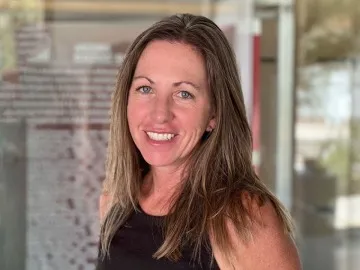
Laura Carr
Carr is a founding member of College of Architecture, Planning and Landscape Architecture's Native Peoples Design Coalition, which connects college resources to tribal communities in need of architectural expertise. As the program coordinator, Carr partners with other university units focused on serving tribal communities, including the Native Peoples' Technical Assistance Office and the Office of Native American Advancement and Tribal Engagement.
Thanks to other university partnerships with the Hopi Tribe, Carr was familiar with the Tawa'Ovi project. She thought it would be a perfect match for a students in an architecture studio course that, for years, has been built around the U.S. Department of Energy's Solar Decathlon Design Challenge. The annual competition challenges students from 93 universities across 18 countries to design "zero energy" buildings – buildings that can generate the energy they need each year with renewable sources, such as solar or wind, without using nonrenewable energy.
"It was a really good fit for what the Tawa'Ovi team was looking for in terms of the challenges they faced," Carr said.
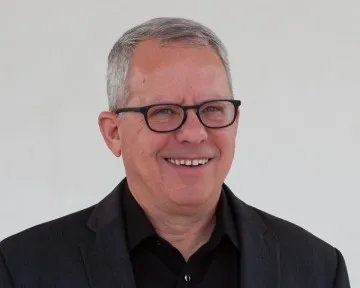
David Brubaker
David Brubaker, an adjunct lecturer in the School of Architecture who has led the studio for two years, agreed. The project would also provide students real-world experience with a client whose vision included many of the competition's requirements – especially those related to sustainability.
Carr connected Brubaker with Gashwazra, who thought student projects on Tawa'Ovi could help the tribe understand how to develop self-sustaining architecture and provide an opportunity to test and demonstrate energy concepts before eventually hiring a firm to finish the designs and build Tawa'Ovi.
"In some respects, this project will be an exemplary project because it will show our Hopi Tribe, while we have all this abundance of sun, why not utilize it for power to our homes," Shingoitewa said. "I think this is where energy independence comes in."
The most important skill
Students in the class made the 350-mile trip to the Hopi reservation at the tribe's invitation. During the 36-hour visit, students toured the reservation, saw cultural sites, met with tribal leaders and talked with residents about Hopi customs and traditions. They learned Hopi beliefs and how the tribe built homes using traditional sandstone masonry.
Perea said he was struck by the tribe's stewardship of its land, which inspired him to want to find ways to help protect it.
"The students got to practice one of their most important skills as an architect, which is to listen," Brubaker said. "While we put a little piece of ourselves in our designs, our buildings are for our clients, so we need to create designs they can relate to."
Tribal members appreciated the time the students took to visit, Gashwazra said.
"They were excited, and we were excited that they wanted to learn and incorporate that knowledge into their work," Gashwazra said. "I could tell that they were really interested, not only as far as the class but also having the experience to come out to Hopi, because not too many people get to make it out to Hopi and see it."
The winning work
Students spent a full semester designing three separate projects as part of the larger Tawa'Ovi master plan. In April, they presented their designs at a Department of Energy field office in Golden, Colorado, where a Solar Decathlon panel of jurors – all architecture or engineering professionals – gave feedback.
"Not only do students have to create a project that meets all these criteria," Brubaker said. "They also have to present it in a winning way, which is always part of your job as an architect."
The entries were submitted in one of the following divisions: single-family houses; attached housing or condominiums; multi-family housing or apartments; or educational facilities.
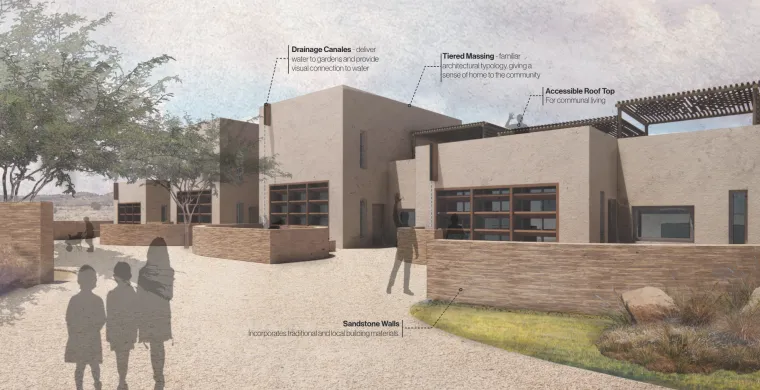
Perea's team designed a community of condominiums, called Harvest Mesa. The designs feature a wall made of sandstone – a material the Hopi have used for centuries – that would absorb and trap sunlight during the day and use it to warm the building at night.
The team in the multi-family housing division designed a three-level building with commercial space, two- and four-bedroom student housing units, and a rooftop greenhouse. Another team, in the education building division, designed a career and technical education campus. Perea's team designed a community of condominiums, called Harvest Mesa, for the attached housing division.
Each team investigated the economics and demographics of the area, how far residents travel for certain services, the region's climate and the sustainability, and the cost of building materials.
Each project proposed its own solar-powered system, each of which would feed into a larger power grid for the whole village. The plans incorporated an existing, commercially available solar microgrid system made by the renewable energy company Block Energy.
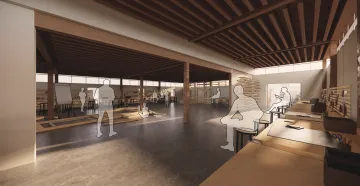
The education building team's designs featured workshop space – pictured here – as well as traditional classroom spaces, a recreation court, communal eating spaces and more.
All projects were designed to meet the Phius ZERO standard, a rigorous design-industry standard that requires a building to use only a fraction of a typical building's energy. The students' design concepts had to adhere to the standard in order for the project to be feasible.
Perea said he was proud of how his team incorporated traditional Hopi building methods and materials in a modern way. He pointed to the south-facing wall on the Harvest Mesa site, which uses sandstone – a material the Hopi have used for centuries – to absorb and trap sunlight during the day and use it to warm the building at night.
The use of sandstone is part of a larger vision, Perea said, to help revitalize the sandstone masonry trade on the reservation by designing buildings with it. The trade could also be taught at the career and technical education campus.
"That's the part I'm proudest of – our architecture could contribute to the local economy and to the culture in that way," Perea said.
His team, which also included Pablo Cabanillas, Emme Mooday, Olivia Nelson and Jordan West, clinched first place in the attached housing division and was named the Solar Decathlon's 2024 Design Challenge Grand Winner, the competition's top prize.
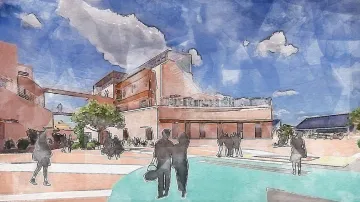
The multi-family housing team's design featured two buildings with living spaces, community kitchens, a greenhouse and a plaza, pictured here.
Colleen Barbanti, a member of the multi-family housing team, designed her project to include student housing with large community kitchens – a specific request from tribal members who described "dream kitchens" with ample space for pots, pans and people. The units included traditional rooftop terraces with a rainwater collection system and were located above commercial spaces, including a laundromat.
"I really enjoyed working on that because those were all services that they directly said they needed on site," Barbanti said. "We were able to design it to the extent that they're not going to be hurting for water, which is really rewarding because we tried to do our best to make that building as efficient and self-sustaining and resilient as possible."
Barbanti and classmates Ashlea Hume, Chloe O'Hail, Jeannell Hilton and Travis Reihner, placed second in their division.
Hamad Alajmi, Khaled Alenezi, Jelani Hampton, Christian MacKay, Alexio Mora and Nikita Rafikov made up the third team, which was a finalist in the education building division.
This was the fourth consecutive year that UArizona teams have been finalists or winners in the Solar Decathlon Design Challenge.
'Getting it done'
Fresh off their strong showing in Golden, the students gathered on campus with Brubaker, Carr, Shingoitewa, Gashwazra and other college and tribal leaders to present their projects one last time.
Shingoitewa said the tribe was proud of the students' modern designs that incorporate elements reminiscent of traditional Hopi homes.
"What I saw from the students was a lot of energy in what they saw and visualized," said Shingoitewa, who spent years as an educator. "For them to put together something, enter it into a contest and then win it, that, to me as an educator, is what you want students to learn – if you put in an effort, there's going to be a reward."
The designs, presentations and other materials the students assembled as part of the project have been shared with Gashwazra, Shingoitewa and other tribal representatives. The materials are a crucial next step for Tawa'Ovi, Shingoitewa said. Until now, no one had been able to truly visualize the project, making it hard to build support for it.
Carr is scheduled to present the project to the Hopi Tribal Council in late July.
Gashwazra hopes a set of housing units, tentatively scheduled to break ground next spring, can incorporate some of the students' designs.
In the two decades that Tawa'Ovi has been an idea, this is the closest it's come to reality, Gashwazra said. He's optimistic about future partnerships with the college.
"We're finally at the point of not talking about it, but actually getting it done," he added. "It's really exciting, and hopefully we can keep working with the school for as long as we can."

